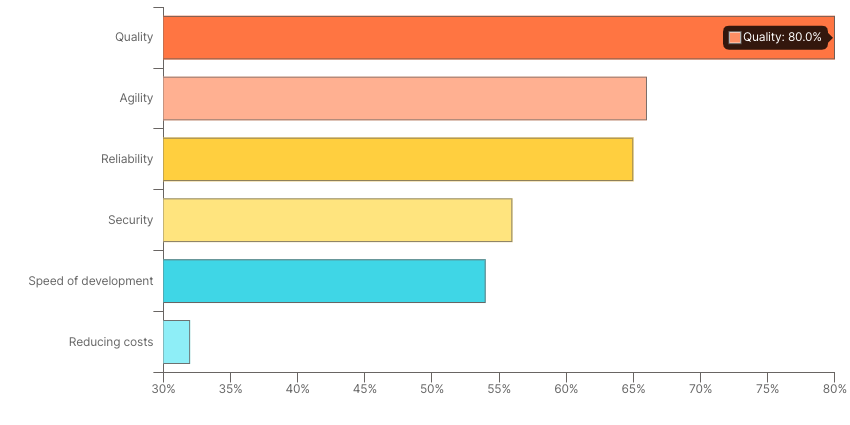The findings in this report are golden and kudos to the PostMan team for producing a well-balanced and researched report (https://www.postman.com/state-of-api/, 2021).
The full report is available at: https://www.postman.com/assets/api-survey-2021/postman-state-of-api-2021.pdf.
Its findings are highly encouraging, and reading between the lines, are a fantastic indicator that the industry is on target for a continued adoption of mobile-first, API-first and micro-service architecture.
Our key take aways from this report:
The API ecosystem is global and growing
Postman reports continuing growth in API activity:
- Users: 17 million
- Collections created: 30 million (up 39%)
- Requests created: 855 million (up 56%)
There are many more people, other than developers using APIs

Developers are spending more time with APIs
< 10 hours/week: 33%
10 – 20 hours/week: 39%
> 20 hours/week: 28%
This was a rather surprising set of stats, and probably due to the respondents coming from API driven developers.
API first methodology
Encouragingly, there is increased awareness of the API-first methodology, and more businesses are approaching their architecture in this way:

Sadly, there was an inconsistent or lack of understanding of what API-first actually meant:

Public vs Private vs Partner
Of interest here is that the vast majority of APIs are intended for private use within companies. This ties-in with the API-first methodology, where APIs are considered first-class citizens in the (Understanding the API-First Approach to Building Products, 2021)
APIs are treated as “first-class citizens.” That everything about a project revolves around the idea that the end product will be consumed by mobile devices, and that APIs will be consumed by client applications. An API-first approach involves developing APIs that are consistent and reusable, which can be accomplished by using an API description language to establish a contract for how the API is supposed to behave.

- Private (only used by your team or your company): 58%
- Partner (shared only with integration partners): 27%
- Public (openly available on the web): 15%
Lack of time was the biggest obstacle to producing APIs

JSON Schema is by far the biggest specification tool for APIs

Now this one really surprised us (we had assumed it would be OpenAPI 3.0, but that was below Swagger 2.0. Considering that the API documentation standards have still not coalesced into an accepted standard, there should be no surprises in movements here, and it has to be said that JSON Schema is fantastic, especially for defining complex, nested object types.
Quality is the biggest priority for APIs, above security

This was also a surprise to us, although it transpires that a lot of APIs consume public APIs and therefore we assume that when quality is specified, they mean quality of data and resource specification. Therefore leading to a better resource offering and more consumers of it.

